Text
the angels have all gone away
the angels come too late
the angels don't know how to help
the angels are not angels
the angels come, but not to help
195 notes
·
View notes
Text
"Pluto isn't a planet" Fine.
"Dinosaurs had feathers" Fine!
"Neptune isn't a beautiful oceanic blue, it's actually the same washed-out disappointing color as Uranus" I will kill you with my bare hands

Look how they massacred my boy
12K notes
·
View notes
Text
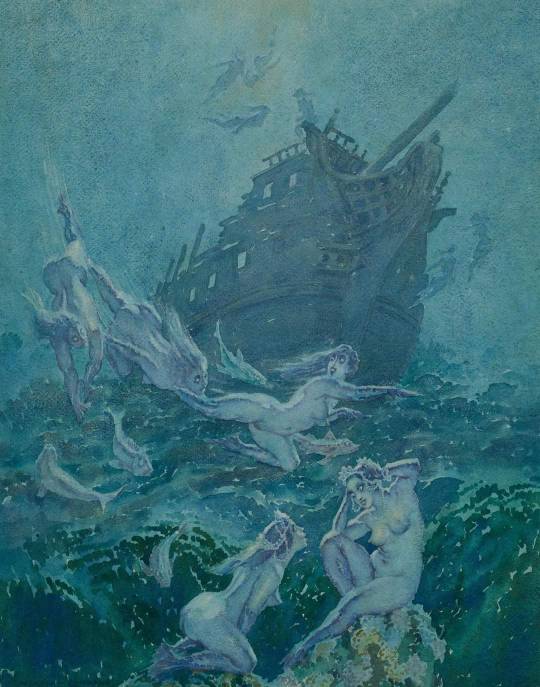
"Shipwreck with Sirens"
Norman Lindsay (1879-1969)
50 notes
·
View notes
Text
A murder mystery film set in a medieval village. After an outbreak of plague, the villagers make the decision to shut their borders so as to protect the disease from spreading (see the real life case of the village of Eyam). As the disease decimates the population, however, some bodies start showing up that very obviously were not killed by plague.
Since nobody has been in or out since the outbreak began, the killer has to be somebody in the local community.
The village constable (who is essentially just Some Guy, because being a medieval constable was a bit like getting jury duty, if jury duty gave you the power to arrest people) struggles to investigate the crime without exposing himself to the disease, and to maintain order as the plague-stricken villagers begin to turn on each other.
The killer strikes repeatedly, seemingly taking advantage of the empty streets and forced isolation to strike without witnesses. As with any other murder mystery, the audience is given exactly the same information to solve the crime as the detective.
Except, that is, whenever another character is killed, at which point we cut to the present day where said character's remains are being carefully examined by a team of modern archaeologists and historians who are also trying to figure out why so many of the people in this plague-pit died from blunt force trauma.
The archaeologists and historians, btw, are real experts who haven't been allowed to read the script. The filmmakers just give them a model of the victim's remains, along with some artefacts, and they have to treat it like a real case and give their real opinion on how they think this person died.
We then cut back to the past, where the constable is trying to do the same thing. Unlike the archaeologists, he doesn't have the advantage of modern tech and medical knowledge to examine the body, but he does have a more complete crime scene (since certain clues obviously wouldn't survive to be dug up in the modern day) and personal knowledge from having probably known the victim.
The audience then gets a more complete picture than either group, and an insight into both the strengths and limits of modern archaeology, explaining what we can and can't learn from studying a person's remains.
At the end of the film, after the killer is revealed and the main plot is resolved, we then get to see the archaeologists get shown the actual scenes where their 'victims' were killed, so they can see how well their conclusions match up with what 'really' happened.
20K notes
·
View notes
Text
Das Irrlicht
An Irrlicht (stray light, also called a stray wisp, swamp light and ignis fatuus) is a certain luminous phenomenon that is supposedly occasionally sighted in swamps, moors, mires or in particularly dense, dark forests and (more rarely) in cemeteries. It is the same phenomenon commonly called will-o'-the-wisp in English.
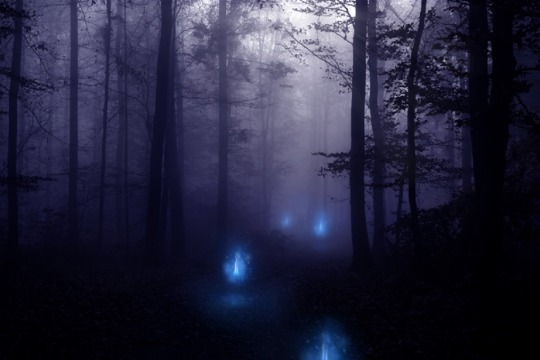
In folklore and superstition, Irrlichter are usually seen either as the malicious work of supernatural beings or as the souls of the unfortunate deceased. According to popular belief, following Irrlichter or even trying to catch them brings bad luck. In the natural sciences, their existence as independent entities is fundamentally rejected. Reports of alleged sightings are nevertheless investigated, however, because in nature there are both living creatures and gases that can produce lights that are very similar to descriptions of an Irrlicht. Scientists therefore suspect that reports of an Irrlicht are simply due to confusion and optical illusions. In art and poetry, as well as in modern subculture, Irrlicht motifs are widespread and popular.
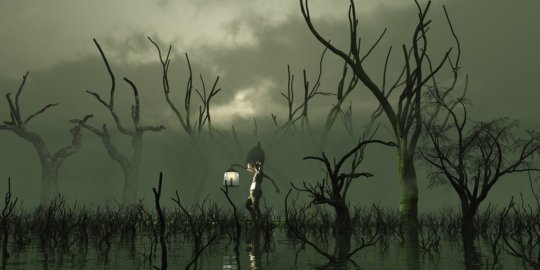
Descriptions of Irrlicht sightings vary; they are usually described as small flames, but more rarely they are said to be fireballs the size of a fist or even a head. Their colour is usually described as bluish, greenish or reddish. There are also different reports about how the Irrlicht moves. They are said to either remain motionless in one place or to light up wildly and then immediately go out again. Less credible reports tell of an Irrlicht moving away from the observer or actually pursuing them, as if they were being controlled by someone else or were intelligent beings with a will of their own.

Irrlicht sightings can be scientifically explained by life forms capable of bioluminescence such as glow worms (Lampyris noctiluca) or fungi such as the bitter oyster (Panellus stipticus). Marsh gases consisting of methane, hydrogen sulfide, and phosphanes or phosphines may combust spontaneously if they reach a critical concentration, causing luminous phenomena.

In folklore and superstition, Irrlichter are said to have an ominous or even malicious nature. In many myths and legends, they are the souls of the deceased who were either evil during their lifetime and must now walk the earth forever as punishment, or who cannot find peace after death and are looking for redemption. Similar stories are told about the souls of stillborn children. Some legends interpret them as the sad souls of murder and accident victims who drowned in the moor.

Most of the time, however, they are understood to be the work of evil goblins, nature spirits, ghosts and/or demons. These are said to summon an Irrlicht or transform themselves into one in order to then deliberately harm people. The light is said to lead travellers, adventurers and the curious to their doom: the victims, who have already ventured dangerously close to the swamp or forest, are lured even deeper by the Irrlicht until they sink into the mud or get lost in the deep forest and die there.

From Sorbian folklore there are stories about the Blud, who are said to appear as Irrlichter. According to tradition, these are the souls of children who died without being baptized. Now their souls are said to wander around weeping in the form of an Irrlicht.

Irrlichter have often been referenced in art and poetry. Johann Wolfgang von Goethe had them appear in his epic work Faust during Walpurgis Night. Hermann Hendrich painted the dance of the Irrlichter for Walpurgis Hall at the Witches' Dance Floor near Thale in the Harz mountains, where according to the legend the witches are having a dance party every year at Walpurgis Night.

Irrlichter are a recurring motif in modern subculture in fantasy and science fiction cartoons, movies, and games. The Pokémon Vulpix, for instance, can conjure an Irrlicht.
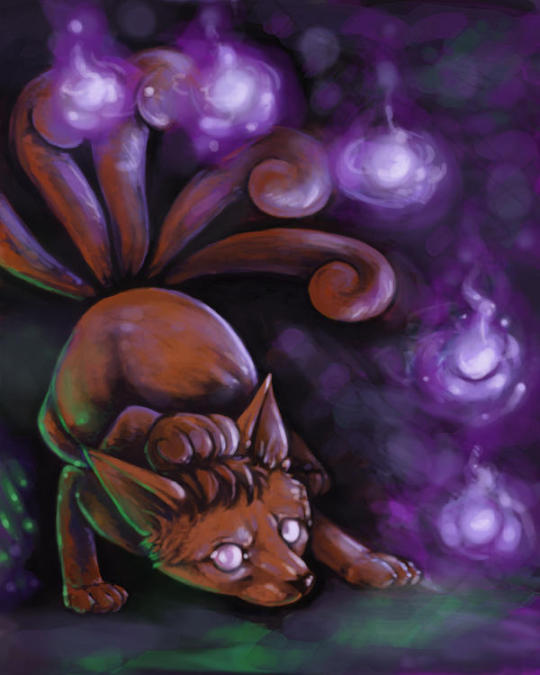
42 notes
·
View notes
Text


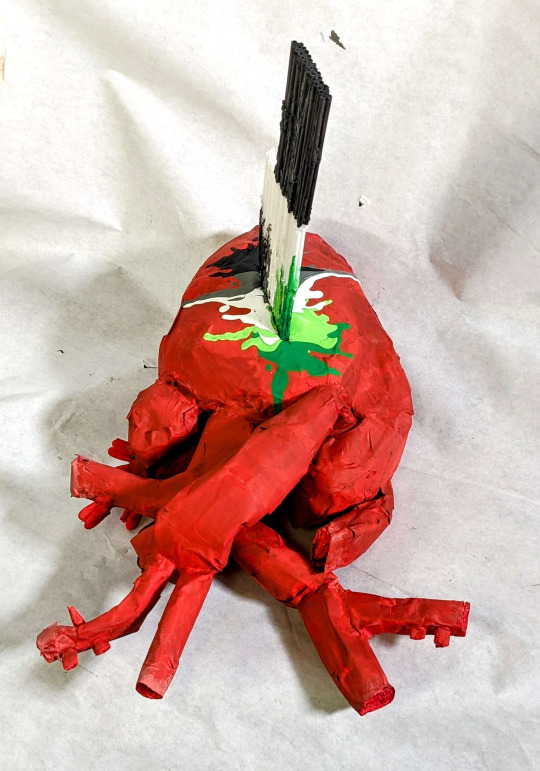





epic aro sculpture i did for class
the heart is made out of plastic bags wrapped with tape, so it's squishy ^_^ and the knife is qtips hot glued together. the knife is also removable!
7K notes
·
View notes
Text

Santiago Caruso - Cover art for Reggie Oliver's 'The Boke of the Divill'
source
232 notes
·
View notes
Text
“I find it wholesome to be alone the greater part of the time. To be in company, even with the best, is soon wearisome and dissipating.”
- Henry David Thoreau, Walden
825 notes
·
View notes
Photo

© Yaroslav Gerzhedovich
115 notes
·
View notes












